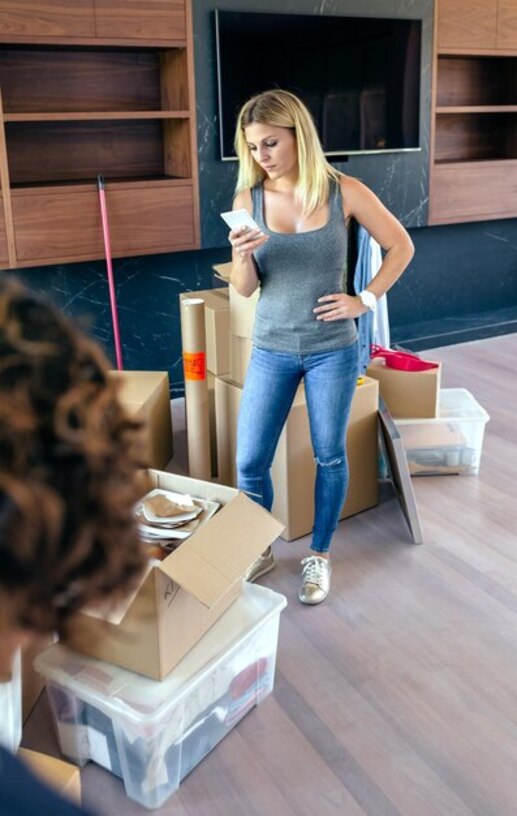Tips for packing efficiently and saving time on your move

Packing for a move can be a real challenge, but with the right tips, you can do it efficiently and stress-free. In this article, we will provide you with practical strategies that will not only simplify the process but also help you save time and energy. From choosing packing materials to smart techniques for organizing your belongings, you will discover how to turn your move into a smoother and more enjoyable experience. Get ready to enjoy a new home without complications!
Choose the right packaging materials: what you really need.
When it comes to packing for a move, choosing the right packing materials can make a significant difference in the efficiency of the process. First, it is essential to have boxes of different sizes, as this will allow you to adapt the space according to the nature and volume of your belongings. Opt for sturdy, high-quality boxes that can withstand weight and protect what’s inside. Additionally, do not underestimate the importance of bubble wrap or kraft paper; these are ideal for wrapping fragile items such as dishware, glassware, or decorative elements, ensuring they arrive at your new home in perfect condition.
Consider incorporating recycled or reusable materials into your packing strategy. For example, old blankets or towels can serve as excellent padding to protect furniture and other bulky items. Reusable bags are another practical option for packing clothes and lightweight items. Not only will you reduce the use of disposable plastic, but you will also contribute to a more sustainable approach during your move. Remember that having the right materials on hand not only speeds up the packing process but also gives you peace of mind knowing that your belongings are well protected during the transfer.
2. Classify and organize: the key to packing quickly.
Sorting and organizing your belongings is essential for packing quickly and effectively. Before you start filling boxes, take time to categorize what you have: clothes, kitchen utensils, books, decorations, and personal items. This classification will not only help you better visualize the amount of things you own, but it will also make the packing process easier. By grouping similar items, you will be able to quickly identify what you need and what you can donate or discard, avoiding unnecessary clutter in your new home.
Once you have sorted your belongings, organize each category into specific sections within the area where you are packing. Use labeled boxes to group items by type or room; this will make unpacking much easier. Additionally, by having everything organized from the start, you will reduce the time wasted looking for lost items during the move. Also, remember to take advantage of the empty space in the boxes by filling them with smaller items or cushioning fragile objects with clothing; this way you will optimize each box and make your move even more efficient.
3. Efficient labeling: how to identify boxes in an instant.
Efficient labeling is essential to facilitate the moving process. When packing, make sure to have clear and visible labels that identify the contents of each box. Use a color-coding system: assign a specific color to each room and use that color on the corresponding labels. This way, when you arrive at your new home, you can easily direct each box to its place without having to open them one by one. Additionally, writing a brief description of the contents on the label will allow you to know exactly what is inside without having to remember what you packed.
To further maximize efficiency, consider using a digital inventory. Take photos of the contents of each box before sealing them and note them on a sheet or app on your phone. This will not only help you quickly locate what you need during the move, but it will also be useful when you're looking for something specific after arriving at your new home. With well-organized labeling and a visual inventory, you can significantly reduce the time spent searching for lost items and enjoy the process of settling into your new space more.
4. Packing methods: techniques to protect your fragile items.
When it comes to packing fragile items, the key is preparation and choosing the right techniques to ensure their protection. Start by gathering specific materials such as sturdy cardboard boxes, bubble wrap, old blankets or towels, and packing tape. These elements will allow you to create a safe environment for your delicate items. When packing, make sure to wrap each item individually with bubble wrap or kraft paper before placing it in the box, using additional layers of protection between the items to prevent them from hitting each other during transport.
In addition to protective wrapping, it is essential to organize the contents well within the boxes. Place the heavier items at the bottom and the lighter ones on top to maintain a balanced distribution and minimize the risk of damage. If possible, label each box with a clear description of the contents and the indication "fragile" so that those handling your move take additional precautions. Remember that good packing technique also involves filling any empty space with cushioning material such as crumpled paper or foam; this will help keep your belongings stable and secure during transport. With these packing methods, you can significantly reduce the stress related to transporting your most treasured items.
5. Make the most of the space: tricks to maximize every box.
Maximizing the space in each box is essential for an efficient move. One of the best strategies is to use items you already own as filler, such as clothes, towels, or sheets. Instead of packing these items separately, place them in the empty spaces in the boxes. This will not only protect your belongings but also maximize the use of available space, preventing unnecessary gaps that could make the boxes bulkier and harder to transport. Additionally, make sure to pack heavier items at the bottom and lighter ones on top to maintain proper balance during the move. Another useful technique is to sort and group similar items before packing them. For example, if you are packing kitchen utensils, place all the knives in one box and all the bowls in another. This will allow you to better utilize space by stacking items in an organized manner. Also, consider using boxes of different sizes; smaller ones are ideal for heavy and fragile items, while larger boxes can hold lightweight but bulky items. At the end of the process, labeling each box with its contents and the room it belongs to will further facilitate unpacking in your new home. With these simple tricks, you will optimize each box and minimize clutter during your move.
6. Plan your move: effective timeline to not forget anything.
When planning your move, it is crucial to establish an effective timeline that allows you to organize each stage of the process. Start by setting a date for the big day and work backward, creating a list of tasks you need to complete weekly. For example, in the first week, you could begin gathering packing materials and getting rid of unnecessary items. As the moving date approaches, assign specific days to pack entire rooms, ensuring you label each box with its contents and the location it should go in your new home. This approach will not only help you stay focused but also reduce the chance of forgetting important items.
In addition to marking key dates on your calendar, consider using applications or digital tools to manage your tasks. These can remind you when it's the right time to perform certain activities and allow you to track progress. Include moments to review your belongings and decide what you will take with you, what you will donate or sell, and what you can discard. Don't forget to leave enough time in the days leading up to the move to make any final adjustments and even schedule visits for moving services or vehicle rentals if necessary. With a well-structured timeline and a proactive approach, you will not only avoid last-minute stress but also achieve a more organized transition to your new home.
7. Unpack strategically: set up your new home hassle-free.
Unpacking may seem as overwhelming a task as packing, but with a strategic approach, you can transform this process into something much more manageable. Before opening the boxes, it is advisable to make a plan about which areas of your new home you want to tackle first. Start with the spaces you use most frequently, such as the kitchen and the bedroom. By focusing on these areas, you will ensure that you have the essentials ready for your first days and avoid feeling overwhelmed by the chaos of the rest of the boxes.
Additionally, consider creating an organization system while unpacking. Label each box with its contents and the room it belongs to; this will allow you to quickly locate what you need without wasting time searching through piles of items. It is also helpful to have basic tools and cleaning supplies on hand to settle in comfortably from the very start. With these strategies while unpacking, you will be able to enjoy your new home without complications and start this new chapter on the right foot.



